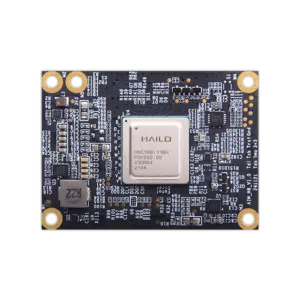Seamless AI Integration with Geniatech's M.2 and B2B AI Accelerator Options
Seamless AI Integration with Geniatech's M.2 and B2B AI Accelerator Options
Blog Article
Seamless AI Integration with Geniatech's M.2 and B2B AI Accelerator Options
Synthetic intelligence (AI) is evolving at a rate that problems industries to embrace better and effective solutions. Among the cornerstones of the improvement are AI accelerator module made to handle complicated heavy understanding jobs without consuming extortionate power. High-performance, low-power AI accelerators are paving just how for better technologies to infiltrate diverse industries, from healthcare and money to automotive and edge computing.

The Need for High-Performance, Low-Power AI Options
Serious learning models are more powerful than actually, but they also demand substantial computational resources. Teaching and operating these designs require equipment that may process immense amounts of knowledge efficiently. But, old-fashioned processors usually fall short in meeting the energy performance and speed required for real-time AI applications. This hole has led to a spike in demand for AI accelerators that assure powerful while being energy-conscious.
For industries relying on successful AI implementation, these accelerators represent a vital solution. Devices and techniques featuring these parts may provide quick insights without draining power reserves, permitting smooth integration into resource-constrained environments. This change toward managing computational power with power efficiency is operating greater adoption across cloud, on-premises, and side research infrastructures.
Critical Characteristics That Determine Contemporary AI Accelerators
Power Effectiveness Without Compromising Power
Low-power consumption is really a trait that units these accelerators apart. They let programs to operate for lengthier intervals, specially in portable or edge applications wherever energy sources are limited. By optimizing energy application, these accelerators aren't only green but additionally cost-effective for businesses.
Improved for AI Workloads
Unlike conventional processors, AI accelerators are tailored to meet the particular needs of heavy understanding workloads. This includes tasks like object detection, language handling, and real-time analytics. Many of these accelerators feature highly parallel architectures, which enable parallel control of information to perform tasks quicker and with higher precision.
Scalability for Any Implementation
Scalability is yet another standout feature of those solutions. Whether you're deploying AI versions in substantial data stores or establishing them into compact edge devices, these accelerators are made to handle various computational needs without limiting efficiency.
Small Designs for Varied Programs
Developments in chip style have created AI accelerators small without diminishing their power. That starts pathways for integration into products across areas like healthcare (wearable devices), retail (smart kiosks), and automotive (self-driving vehicles). That flexibility pushes usage across industries.
Real-World Programs Operating Adoption
Healthcare
From diagnosing conditions to managing individual information, AI in healthcare requires effective computational power. AI accelerators help real-time data examination, enabling quicker and more appropriate diagnostics while conserving program energy.
Money
Studying exchange data and sensing defects for scam recognition is computationally intensive. AI accelerators enable economic institutions to operate deep understanding types faster, improving the speed and accuracy of these protection systems.
Wise Cities

For wise towns deploying AI for monitoring, traffic administration, and power conservation, AI accelerators provide the necessary power and efficiency. Their capacity to use on side devices assures real-time information processing for increased downtown management.
Autonomous Vehicles
Self-driving engineering is probably one of the most challenging programs of heavy learning. AI accelerators provide the computational horsepower needed seriously to process knowledge from cameras and sensors in real-time, ensuring cars produce secure and appropriate decisions.
The Base Point
The change toward high-performance, low-power answers symbolizes the continuing future of deep learning advancements. These accelerators allow industries to push the boundaries of AI integration while ensuring energy efficiency and operational scalability. Their usefulness across industries underscores their influence as both enablers of better technologies and individuals of cost-effective solutions.
By meeting the requirements of real-time analytics and side computing, these accelerators are adjusting the AI landscape, rendering it a reachable, sustainable, and transformational technology for industries over the globe. If your focus is on efficient AI arrangement, low-power AI accelerators are an important portion in that ongoing advancement revolution. Report this page